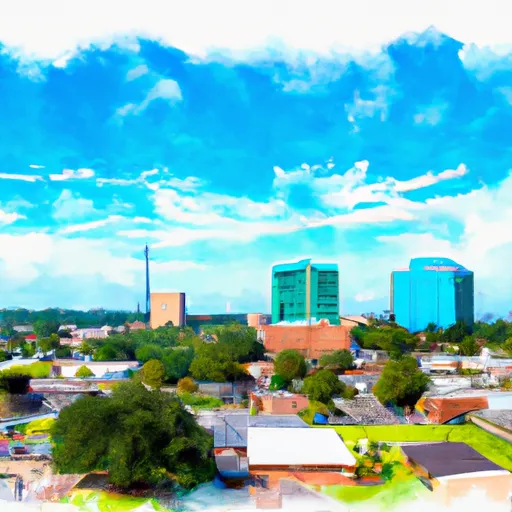-
 Snoflo Premium
Snoflo Premium
Get unlimited access to all our content
With no Ad interruptions! - Start Your Free Trial Login with existing account
Ruskin
Eden Index
Climate
6.6
•
Recreation
4.0
•
Community
2.8
•
Safeguard
4.7/10

Ruskin, Florida is a small suburban community located in Hillsborough County, on the western coast of the state. The town enjoys a pleasant subtropical climate characterized by hot and humid summers, mild winters, and abundant rainfall throughout the year. Summers in Ruskin are typically long and hot, with temperatures often reaching into the 90s Fahrenheit (30s Celsius), while winters tend to be mild, with temperatures rarely dipping below 50 degrees Fahrenheit (10 degrees Celsius).
Hydrologically, Ruskin is surrounded by water bodies, including the Little Manatee River, Tampa Bay, and the Gulf of Mexico. These water sources play a significant role in the town's aesthetic appeal and provide various outdoor recreation opportunities. Fishing, boating, kayaking, and paddleboarding are popular activities for residents and visitors alike.
In addition to water activities, Ruskin offers a range of outdoor recreation options. The area is known for its numerous parks, nature preserves, and hiking trails, such as the Little Manatee River State Park and E.G. Simmons Park, which provide opportunities for biking, camping, picnicking, and wildlife observation. Overall, Ruskin's location and diverse natural surroundings make it a desirable destination for those seeking to enjoy Florida's warm weather and abundant outdoor activities.
What is the Eden Index?
The Snoflo Eden Index serves as a comprehensive rating system for regions, evaluating their desirability through a holistic assessment of climate health, outdoor recreation opportunities, and natural disaster risk, acknowledging the profound impact of these factors on livability and well-being.
Climate Health Indicator (CHI): 6.6
Ruskin receives approximately
1365mm of rain per year,
with humidity levels near 86%
and air temperatures averaging around
23°C.
Ruskin has a plant hardyness factor of
9, meaning
plants and agriculture in this region tend to thrive here all year round.
By considering the ideal temperature range, reliable water supplies, clean air, and stable seasonal rain or snowpacks, the Climate Health Indicator (CHI) underscores the significance of a healthy climate as the foundation for quality living.
A healthy climate is paramount for ensuring a high quality of life and livability in a region, fostering both physical well-being and environmental harmony. This can be characterized by ideal temperatures, reliable access to water supplies, clean air, and consistent seasonal rain or snowpacks.
Weather Forecast
Streamflow Conditions
Area Rivers
Snowpack Depths
Reservoir Storage Capacity
Groundwater Levels
Recreational Opportunity Index (ROI): 4.0
The Recreational Opportunity Index (ROI) recognizes the value of outdoor recreational options, such as parks, hiking trails, camping sites, and fishing spots, while acknowledging that climate plays a pivotal role in ensuring the comfort and consistency of these experiences.
Access to outdoor recreational opportunities, encompassing activities such as parks, hiking, camping, and fishing, is crucial for overall well-being, and the climate plays a pivotal role in enabling and enhancing these experiences, ensuring that individuals can engage in nature-based activities comfortably and consistently.
Camping Areas
| Campground | Campsites | Reservations | Toilets | Showers | Elevation |
|---|---|---|---|---|---|
| Little Manatee River State Park | None | 21 ft | |||
| Coons Creek Military - MacDill AFB | None | 5 ft | |||
| E G Simmons County Park | None | 7 ft | |||
| Holder Mine - Withlacoochee State Forest | 13 | 34 ft | |||
| Ross Prairie | None | 54 ft | |||
| Hog Island - Withlacoochee State Forest | 20 | 72 ft | |||
| Lake Manatee State Park | None | 68 ft | |||
| Lithia Springs | None | 51 ft | |||
| Raccoon Creek Military - MacDill AFB | None | 5 ft | |||
| Myakka River State Park | None | 16 ft |
Catastrophe Safeguard Index (CSI):
The Catastrophe Safeguard Index (CSI) recognizes that natural disaster risk, encompassing floods, fires, hurricanes, and tornadoes, can drastically affect safety and the overall appeal of an area.
The level of natural disaster risk in a region significantly affects safety and the overall livability, with climate change amplifying these risks by potentially increasing the frequency and intensity of events like floods, fires, hurricanes, and tornadoes, thereby posing substantial challenges to community resilience and well-being.
Community Resilience Indicator (CRI): 2.8
The Community Resilience Indicator (CRI) recognizes that education, healthcare, and socioeconomics are crucial to the well-being of a region. The CRI acknowledges the profound impact of these elements on residents' overall quality of life. By evaluating educational resources, healthcare accessibility, and economic inclusivity, the index captures the essential aspects that contribute to a thriving community, fostering resident satisfaction, equity, and social cohesion.

